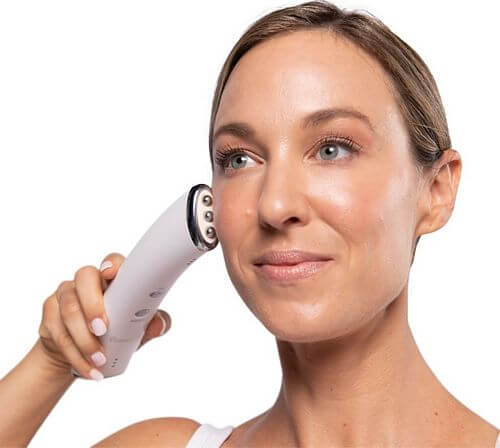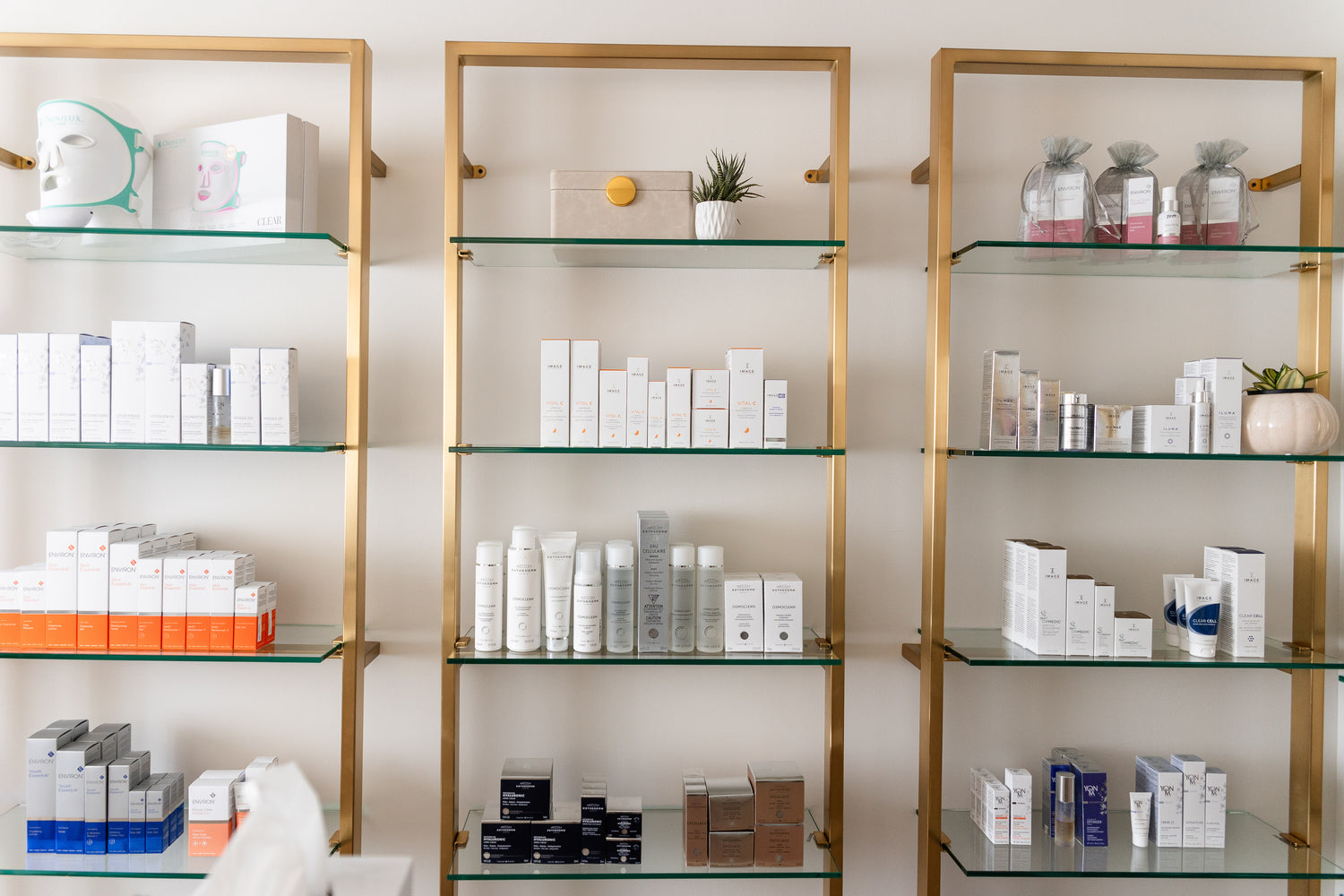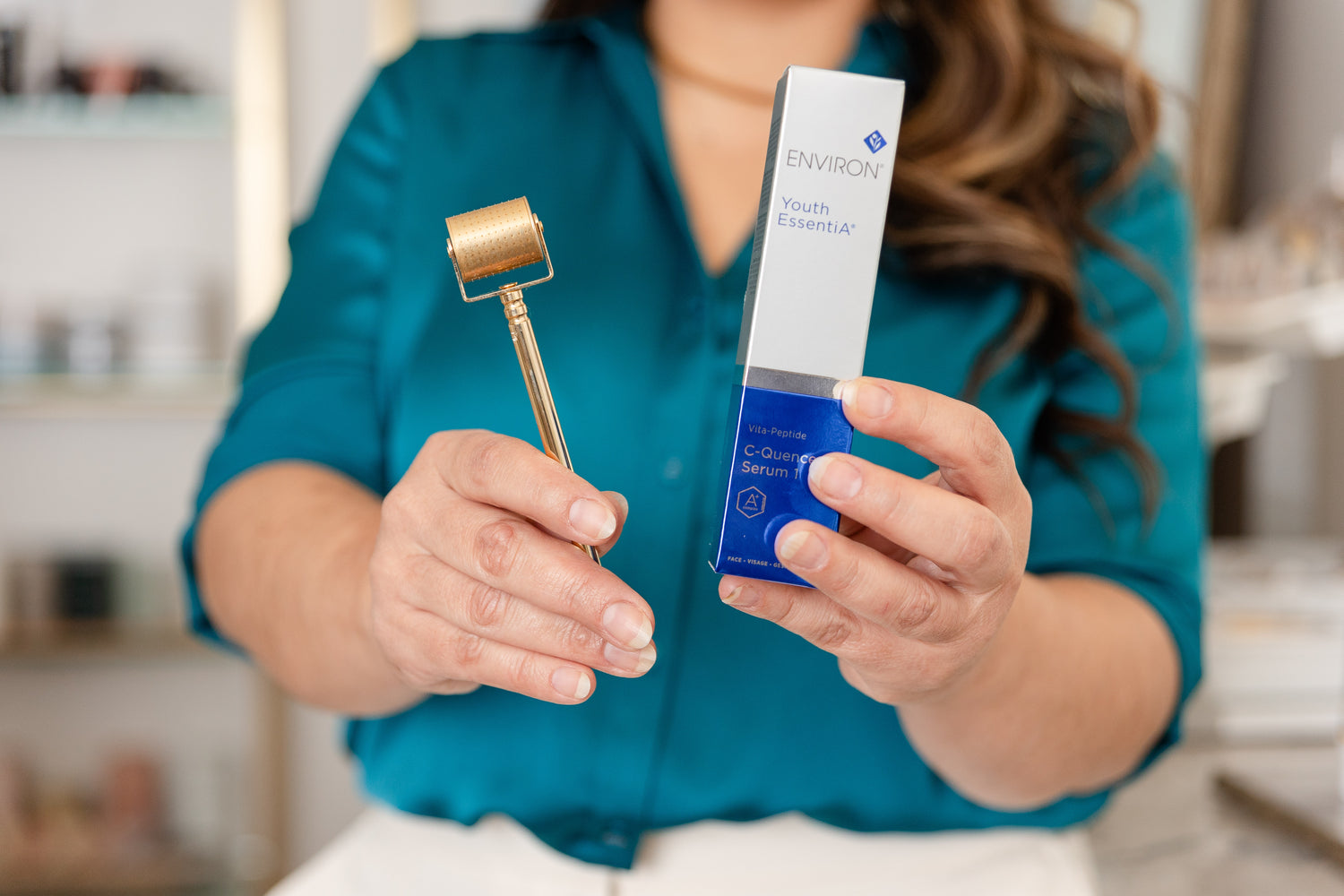Almost on a daily basis, my clients want to know which cream, lotion or potion on our shelves is the “holy grail”. Which one will erase the fine lines & wrinkles? Which one will magically make the discoloration disappear? Which one will lift, tuck and firm?
They are always surprised when I walk them over to our sun protection offerings. “SPF? That’s what you want me to buy?”, they ask. Yes. Certainly, we carry a vast arsenal of skincare products that allow us to help clients achieve their desired results, but sun protection is hands down non-negotiable.
Why is sun protection SO important?
Our skin is under UV assault every day, no matter the season. Whether we’re commuting to work, running errands, sunbathing in the Caribbean or skiing on the slopes, our exposure to UV rays in unrelenting. For the purposes of discussing sun protection for the skin, we are concerned with two (2) categories of UV radiation:
-
UVA rays – radiation that penetrates deep into the skin and can lead to premature aging and skin cancer (remember A is for aging)
-
UVB rays – radiation that is responsible for the color change (tanning or burning) in the skin (remember B is for burning)
UV rays cause 90% of premature aging. 90% - that’s why it is the first place I take my clients on their skincare journey and why it gets its very own episode! Sun damaged skin is dry, discolored and leathery – that’s what is visible on the surface. What we don’t see is the cellular damage – the skin cell’s DNA damage which can ultimately lead to skin cancer. Ideally, your protection should protect you from both UVA and UVB radiation (aka broad spectrum).
How sunscreen ingredients actually work?
Sun care ingredients are typically categorized as chemical or physical sunscreens. In theory, chemical sunscreens absorb UV light and turn it into heat while physical sunscreens reflect and scatter UV light. In reality, there can be a lot of overlap between how they actually work depending on a product’s formulation. A more accurate categorization for sunscreen ingredients is organic (chemical) and inorganic (physical). No, by “organic”, I do not mean it’s natural or clean or better but simply that there is a presence of carbon in the structure. And inorganic sunscreens contain mineral ingredients (zinc oxide & titanium dioxide). While I want to be more accurate, I’m going to use the chemical and physical categorization because it is so widely used and most recognized (albeit less accurate).
There are pros and cons to both chemical and physical sunscreens, but they can both be equally effective in protecting your skin from UV radiation. It’s not a matter of which is better, but rather which is more appropriate for your skin.
Chemical sunscreens can achieve a higher sun protection factor (SPF) than physical sunscreens. Chemical sunscreens usually have less of a white cast than zinc oxide and/or titanium dioxide physical sunscreens. Chemical sunscreens can have a lighter texture. While more research is necessary, some chemical sunscreen ingredients may pose potential health and/or environmental concerns. However, many product lines have identified these specific ingredients and have begun to eliminate them in chemical sunscreen formulations.
Physical sunscreens can be more appropriate for those who have more sensitive skin as they can contain fewer potential irritants and cause fewer allergic reactions. Many physical sunscreens come in tinted formulations in order to address the white cast concerns.
How are sun protection products are rated?
The most familiar rating label is sun protection factor (SPF) which refers to your sunscreen’s ability to protect your skin from UVB rays. If the average person’s skin begins to burn after 10 minutes of sun exposure, then a SPF 20 would protect the skin from burning for approximately 20 times longer (200 minutes). Again, SPF measures a products ability to protect from UVB rays.
Less familiar, but similarly important, is the PA rating. The PA grading system was established in Japan and is meant to rate a product’s ability to protect your skin from UVA rays. Since UVA rays are primarily responsible for aging and skin cancer, you might argue that this rating is very important!
-
PA+ = some protection from UVA radiation
-
PA++ = moderate protection
-
PA+++ = best protection
-
PA+++ = is rare and not used in many countries
What to look for when selecting your sun protection products?
First and foremost, you want BROAD SPECTRUM protection. That means you want protection from both UVA and UVB radiation. This is non-negotiable.
Whether you choose a product that is a chemical or physical sunscreen is really a matter of preference, intended use and is largely determined by your skin type.
-
If you work outdoors or are routinely exposed to the sun, you probably need a higher protection factor – likely found in a chemical sunscreen.
-
If you have sensitive skin and are prone to irritating reactions, a physical sunscreen is probably more ideal.
-
If you have thicker, oilier, more congested skin, you’ll probably want a chemical sunscreen for its lighter texture. Better yet, some skincare brands have developed sunscreens that are formulated as serums - offering the lightest (but still effective) texture.
-
If you have medium-to-dark skin tone, you probably won’t enjoy the white cast found in physical sunscreens.
-
For some, choosing a formulation that is reef safe is important too. Some product formulations can contain ingredients that are damaging to the coral reef and states like Florida and Hawaii have banded these ingredients.
Our client’s skin type, tone and needs can vary greatly. For this reason, we carry a variety of chemical and physical sunscreens. ALL of our sun protection products offer broad spectrum protection.
This week's homework is determining which sun protection product you might want to test. Here's a quick guide to our sun protection product offerings -
|
SKIN TYPE / LIFESTYLE / SKIN CONDITION |
PRODUCT | |
|
Normal/Dry/ Dehydrated |
Prevention+ daily hydrating SPF30 | - 100% mineral (physical) |
| Normal/Dry/ Dehydrated | Prevention+ Sun Serum SPF 30 (untinted) |
- 100% mineral - Featherweight finish - Leaves a dewy, fresh glow |
| Oily/Shine Prone | Prevention+ daily matte SPF30 | - Combo mineral & chemical - Matte finish |
| Oily/Shine Prone | Prevention+ Clear Solar Gel SPF 20 |
- Combo mineral & chemical - Transparent gel leaves weightless feel & finish |
| Prolonged Sun Exposure | Prevention+ daily ultimate SPF50 | - Combo mineral & chemical |
| Uneven Skin Tone | Prevention+ daily tinted SPF30 |
- 100% mineral - Tinted finish |
| Uneven Skin Tone | Prevention+ sun serum SPF 30 (tinted) |
- 100% mineral - Featherweight finish - Leaves a dewy, fresh tinted glow |
| All Skin Types | Tizo2 Facial Primer Non-Tinted SPF40 |
- PA++++ rating - 100% mineral - Smooth, sheer, matte finish |
| Uneven Skin Tone | Tizo3 Facial Primer Tinted SPF40 |
- PA+++ rating - 100% mineral - Smooth, tinted, matte finish |
How to Practice Safe Sun?
-
Apply your sun protection at least 15 minutes before going outdoors.
-
Reapply your sun protection every 2-4 hours (more often if you’re swimming or sweating it off).
-
Avoid prolonged sun exposure between 10 am and 2 pm, wear protective clothing/coverings & seek protective structures (shade).






